Seventy-eight percent of college students from Connecticut participating this academic year in a reciprocal tuition reduction program coordinated by the New England Board of Higher Education (NEBHE) attend undergraduate programs at state colleges and universities. That’s the highest participation level at state colleges and universities among the six New England states, and provides Connecticut students, on average, with $7,747 in tuition savings. That's the third highest average tuition savings among the six states.
In an annual report on the Regional Student Program (RSP), also known as Tuition Break, NEBHE reported that more than $59 million in tuition savings was provided during academic year 2017-18 to 8,654 participating students throughout the region. Just over 1,500 of them are from Connecticut.
The RSP allows eligible residents of the six New England states to pay a reduced tuition rate when they enroll at out-of-state public colleges and universities within the region and pursue approved degree programs not offered by their home-state public institutions. In some cases, students may be eligible when their home is closer to an out-of-state college than to an in-state college. Connecticut residents are eligible for more than 500 undergraduate and graduate degree programs with the RSP Tuition Break.
There were more students coming in to Connecticut public institutions of higher education from other New England states than Connecticut students pursuing their education elsewhere in the region. There were 239 students from Connecticut attending community colleges elsewhere in the region, while 197 students came into Connecticut.
Among the institutions seeing the highest number of incoming students in the Tuition Break program were the University of Connecticut (724 undergraduate students), Asnuntuck Community College (163) and Eastern Connecticut State University (172).
At the undergraduate level, 1,210 students came into the state under the RSP initiative, while 948 from Connecticut attended colleges outside the state under the program. At the graduate level, the trend was reversed: 102 came in to Connecticut while 93 went outside the state through the tuition break program.
The data compiled on the RSP indicates that participating students and families saved an estimated $59 million on this academic year's tuition bills, with a full-time student saving an average of $8,157. Overall, enrollment at four-year undergraduate institutions decreased by 2%, following a 6.8% increase the previous year. Graduate enrollment increased by 11%. Enrollment at community colleges decreased by nearly 9%. Participating Massachusetts students saved an average of $9,285; Rhode Island students an average of $8,613 and Connecticut students an average of $7,747.

New England public colleges and universities received nearly $97 million in tuition revenue from RSP students enrolled at their campuses. Undergraduate programs at four-year state colleges and universities accounted for 59% of RSP enrollment; associate programs, 35%; and graduate programs, 6%.
In Connecticut, Massachusetts, Maine and Rhode Island, the highest percentage of residents enrolled under the RSP in undergraduate programs were at the state colleges and universities: 78%, 66%, 60% and 56%, respectively. In Vermont and New Hampshire, the highest percentage of residents enrolled under the RSP were at the community colleges: 52% and 48%, respectively.
Among the programs enrolling Connecticut residents in 2017-18 are animation, aquaculture & fisher technology, criminal justice, food science, forestry, legal studies, marine engineering, marine science, marine transportation, mountain recreation management, performing arts, fashion merchandising, and zoology.
More than 850 undergraduate and graduate degree programs are offered under the RSP, many of them in specialized and high-demand fields. In 2017, the region's public colleges and universities approved 33 additional programs. Officials note that program offerings expand each year. Programs now include:
Associate degree programs (8): Audio Engineering, Culinary Arts: Baking and Pastry, Entrepreneurship, Fine Woodworking and Furniture Design, Global Studies, International Business, Professional Writing, Video/Film
 Bachelor's degree programs (13): Accelerated Nursing, Aging Studies, Climate Change Science, Elementary Education: Community Engaged Learning, Environmental Studies and Sustainability, Fine Woodworking and Furniture Design, Fisheries Biology, Health Care Studies, Information Technology International Affairs (dual major), Movement Science: Wilderness Leadership Concentration, Wildlife Biology, World Languages Education (K-12)
Bachelor's degree programs (13): Accelerated Nursing, Aging Studies, Climate Change Science, Elementary Education: Community Engaged Learning, Environmental Studies and Sustainability, Fine Woodworking and Furniture Design, Fisheries Biology, Health Care Studies, Information Technology International Affairs (dual major), Movement Science: Wilderness Leadership Concentration, Wildlife Biology, World Languages Education (K-12)
Graduate programs (12): Master's: Athletic Training, Engineering Management, Exercise and Health Sciences, Genetics and Genomic Counseling, Music Pedagogy, Quantitative Economics, Transnational, Cultural and Community Studies, Urban Planning and Community Development
Doctoral: Computational Sciences, Counseling Psychology, Exercise and Health Sciences, Health Promotion Science
Now in its 61st year, the RSP was established by NEBHE in 1957-58 to fulfill the purposes of the congressionally authorized New England Higher Education Compact forged to expand educational opportunities for New England residents and share higher education resources. The RSP helps the individual New England states avoid the high costs of establishing and operating academic programs already offered in the six-state region.
 More than 250 attendees will include consultants, coaches, funders, academics, and executives from across the country. The conference intends to “convene the diverse perspectives that shape and advance our field.”
More than 250 attendees will include consultants, coaches, funders, academics, and executives from across the country. The conference intends to “convene the diverse perspectives that shape and advance our field.”


 The
The 
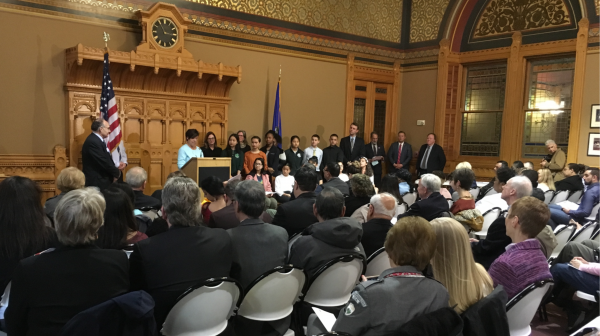
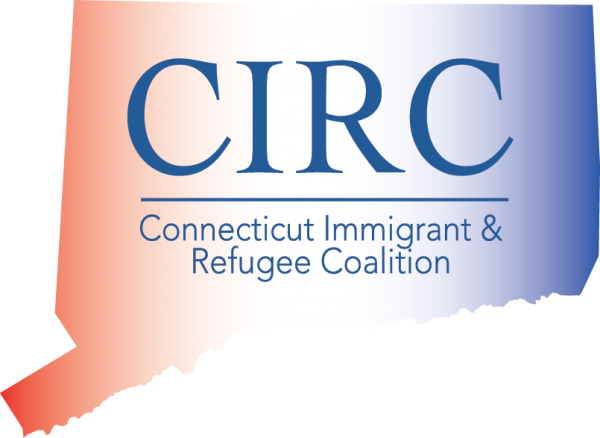 Sixth-graders from the Interdistrict School for Arts and Communication in New London were recognized for their project, “Community Faces-Humanizing the Immigrant Label,” parts of which were on display at the Capitol. The second group was Teens4Citizenship, a Hartford Public Library and Hartford Public Schools collaborative program. As "Citizenship Guides," these high school immigrant students support family and community members on the path to Citizenship and upon turning 18 pursue their own citizenship.
Sixth-graders from the Interdistrict School for Arts and Communication in New London were recognized for their project, “Community Faces-Humanizing the Immigrant Label,” parts of which were on display at the Capitol. The second group was Teens4Citizenship, a Hartford Public Library and Hartford Public Schools collaborative program. As "Citizenship Guides," these high school immigrant students support family and community members on the path to Citizenship and upon turning 18 pursue their own citizenship.

 Bachelor's degree programs (13): Accelerated Nursing, Aging Studies, Climate Change Science, Elementary Education: Community Engaged Learning, Environmental Studies and Sustainability, Fine Woodworking and Furniture Design, Fisheries Biology, Health Care Studies, Information Technology International Affairs (dual major), Movement Science: Wilderness Leadership Concentration, Wildlife Biology, World Languages Education (K-12)
Bachelor's degree programs (13): Accelerated Nursing, Aging Studies, Climate Change Science, Elementary Education: Community Engaged Learning, Environmental Studies and Sustainability, Fine Woodworking and Furniture Design, Fisheries Biology, Health Care Studies, Information Technology International Affairs (dual major), Movement Science: Wilderness Leadership Concentration, Wildlife Biology, World Languages Education (K-12) Instead of honoring Christopher Columbus, the Indigenous Peoples’ Day recognizes Native Americans, who were the first inhabitants of the land that later became the United States of America. Advocates for the switch to Indigenous Peoples Day argue that Columbus did not “discover” America in 1492 but instead began the colonization of it.
Instead of honoring Christopher Columbus, the Indigenous Peoples’ Day recognizes Native Americans, who were the first inhabitants of the land that later became the United States of America. Advocates for the switch to Indigenous Peoples Day argue that Columbus did not “discover” America in 1492 but instead began the colonization of it.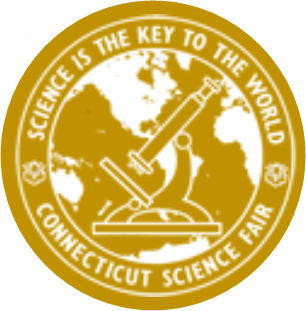
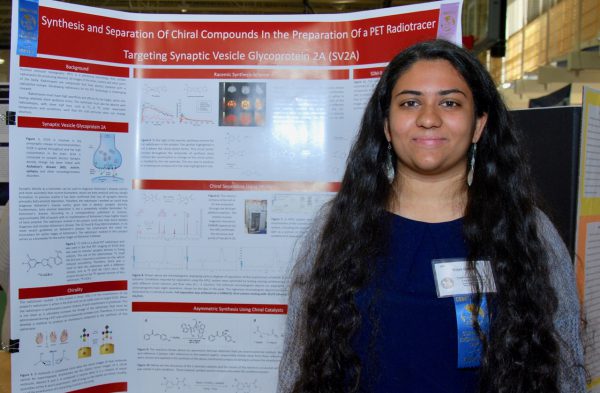 The primary objective of the fair is to attract young people to careers in mathematics, science, and engineering while developing critical thinking and public speaking skills. Through their participation in the fair, students are encouraged to pursue independent work using proper research methods.
The primary objective of the fair is to attract young people to careers in mathematics, science, and engineering while developing critical thinking and public speaking skills. Through their participation in the fair, students are encouraged to pursue independent work using proper research methods.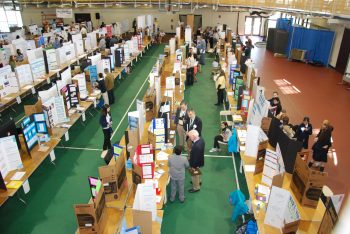
 teachers and administrators are armed,” 85 percent said they would not; 15 percent thought they would.
teachers and administrators are armed,” 85 percent said they would not; 15 percent thought they would.

 The deadline for submission for the 2018 Connecticut Book Awards is April 20, 2018. Finalists will be announced in September and winners announced in October. For more information, visit:
The deadline for submission for the 2018 Connecticut Book Awards is April 20, 2018. Finalists will be announced in September and winners announced in October. For more information, visit: 






























